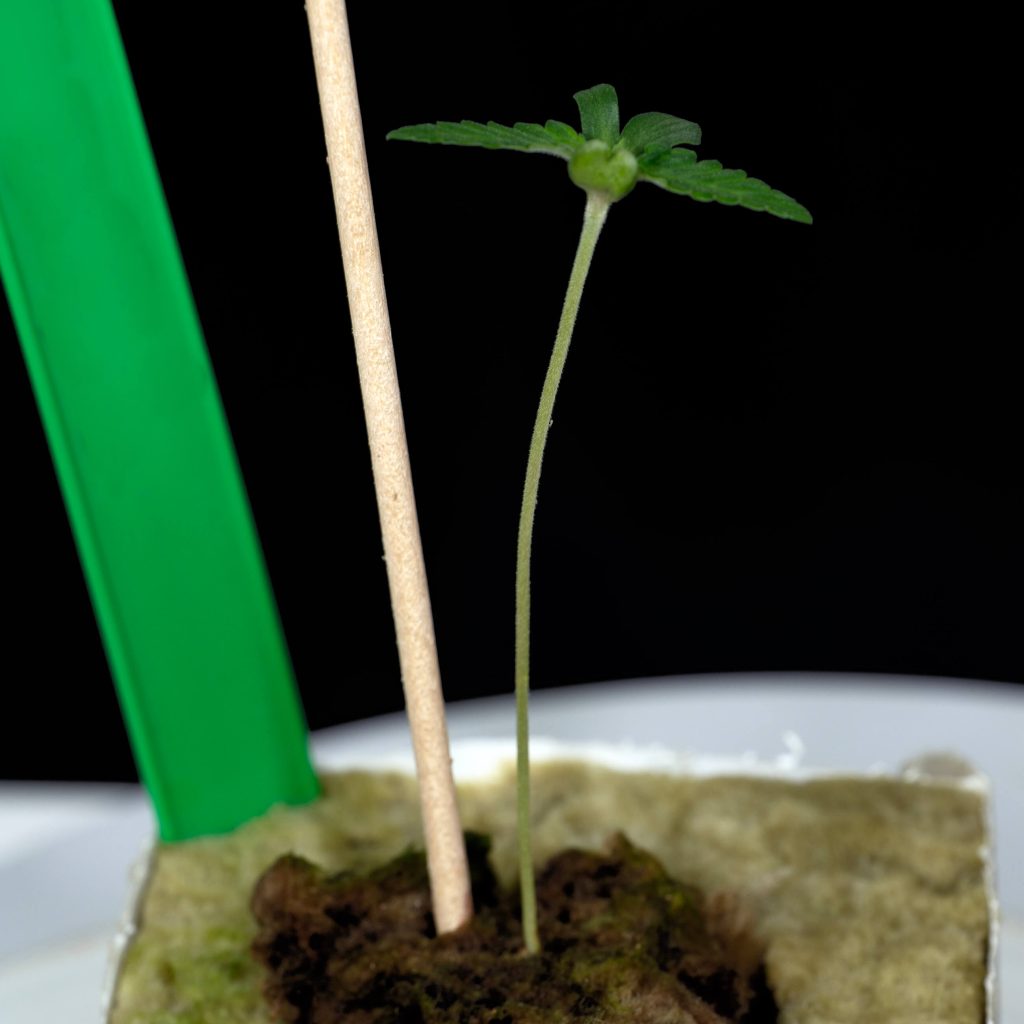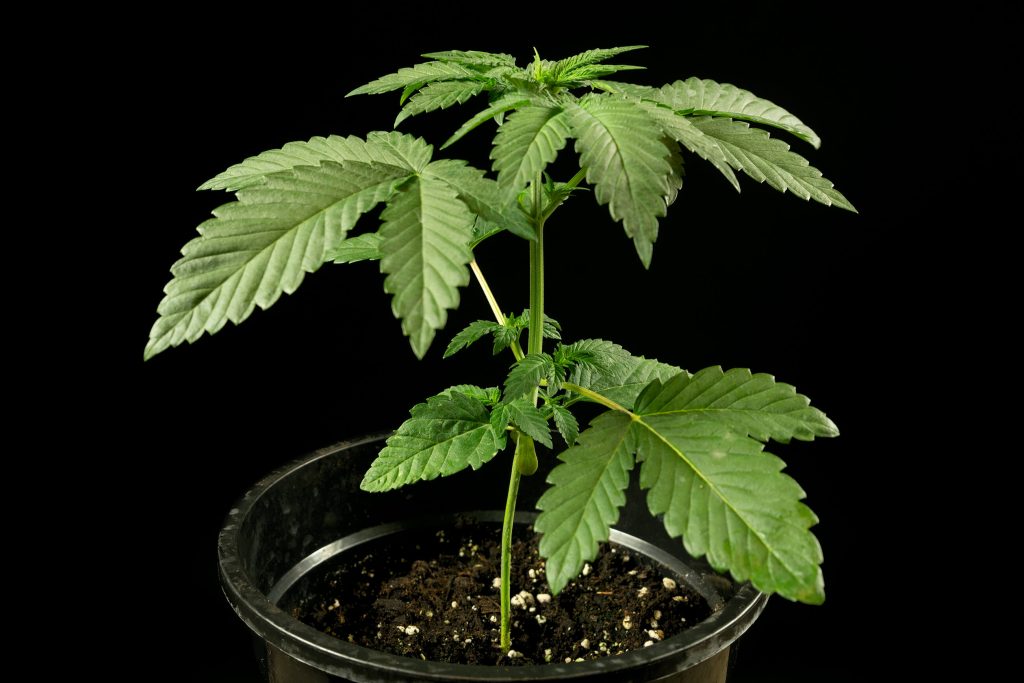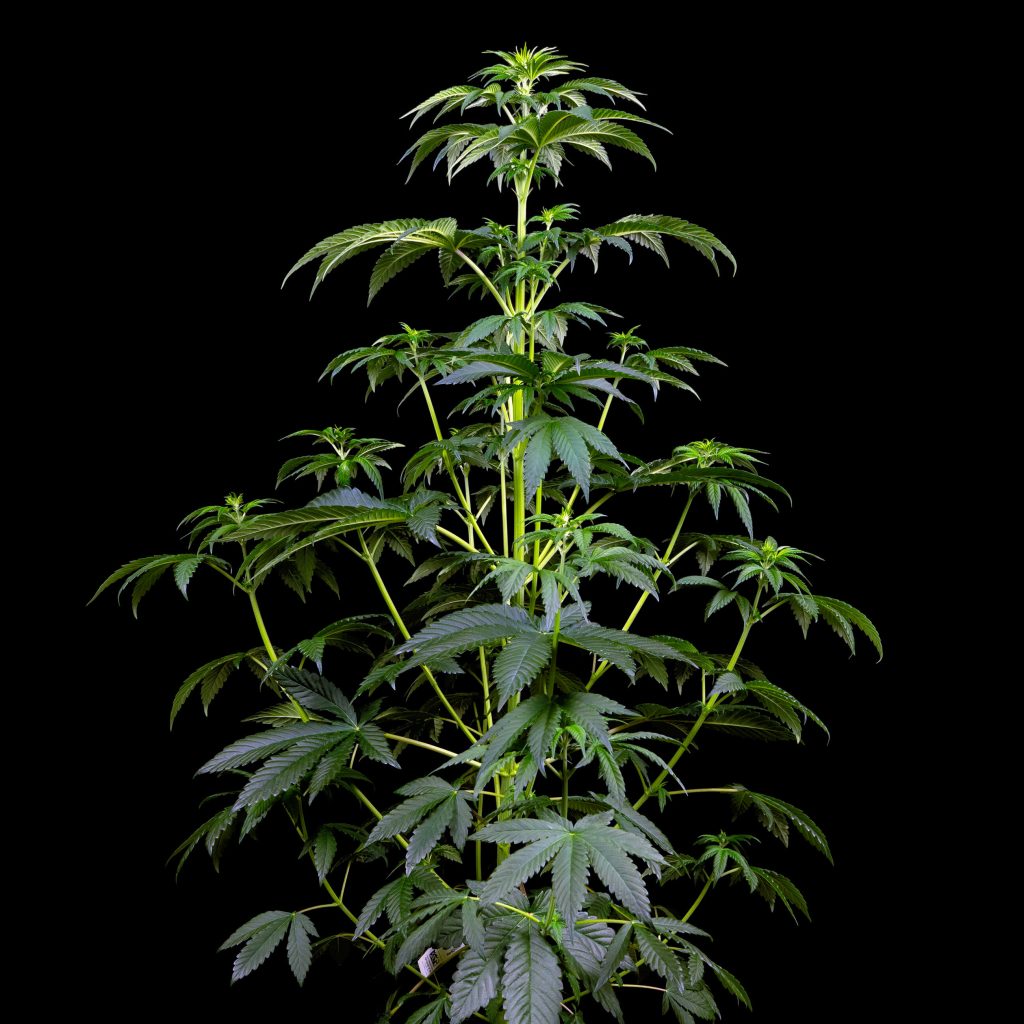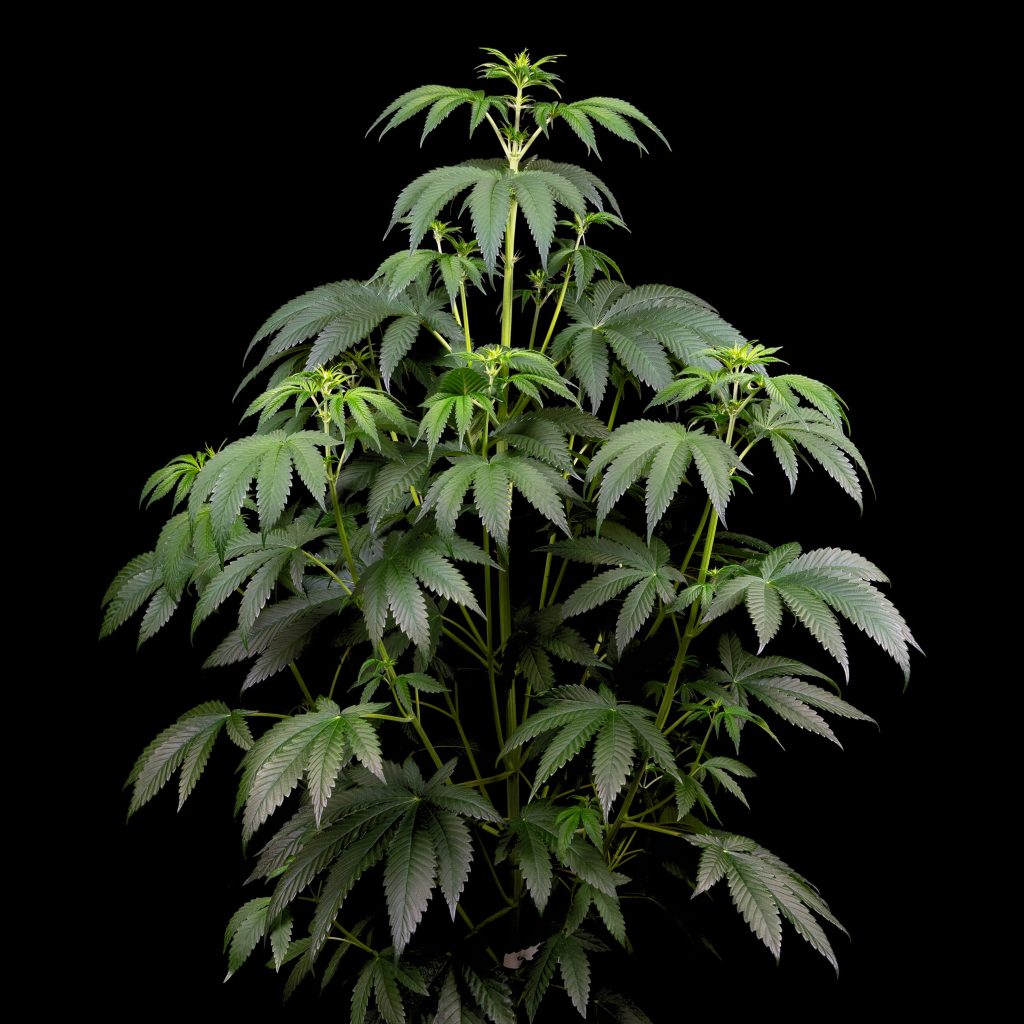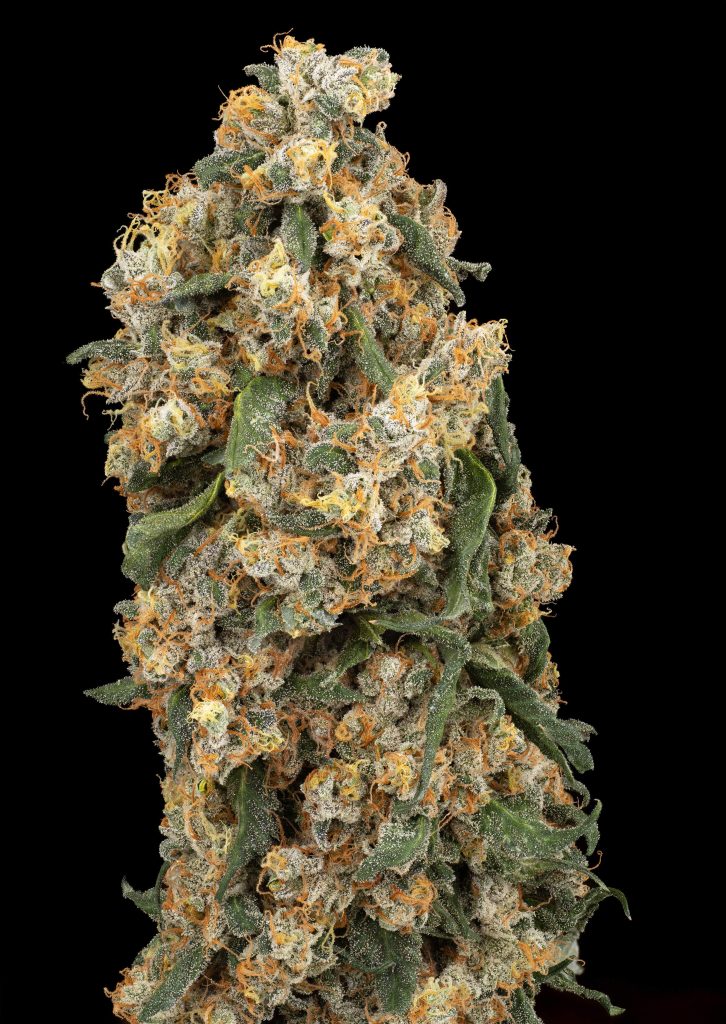Our detailed grow report provides a comprehensive overview of the entire growth cycle of this White Biscotti OG XXL, from the initial stages of germination to the final stages of harvest. It covers all the critical aspects of growing, including optimal growing conditions, nutrient requirements, and pest management strategies.
Flowering stage: 91 days
Total time, seed to harvest: 63 days
Final yield: 127 grams
THC content: 23.47%
As part of our grow report series, we were excited to cultivate the White Biscotti OG XXL Feminized, released in 2024. Its parental lineage includes the heavy-hitting Wifi OG with the flavour-packed Biscotti, and we were looking forward to experiencing some incredible terpene profiles.
Throughout the cultivation cycle, we maintained consistent daytime temperatures of 23°C and nighttime temperatures of 21°C. We also adjusted the humidity levels throughout the cultivation cycle, starting with a humidity of 65%.
Our chosen growing medium was BAC Lava mix, and we opted to use Bio Grow and Bio Bloom nutrients exclusively. We used a 1000W Green Power Philips HPS to provide optimal light coverage. During the vegetation stage, we followed a standard lighting schedule of 18 hours on and 6 hours off. For the flowering stage, we switched to a 12/12 lighting schedule. To ensure proper air circulation throughout the canopy, we used oscillating fans.
Germination & seedling
In the first week of the cultivation process, we used an 18-hour light cycle and a 6-hour darkness cycle to promote vegetative growth. We placed the seeds between two damp paper towels to germinate and then enclosed them between two plates. This helps retain moisture and creates a favourable environment for the seeds to sprout. We kept the seeds in a warm and dark location and waited 27 hours for the initial sprout to emerge before moving them to our rock wool cubes.
At the end of the week, our White Biscotti OG XXL seedling had reached 6 cm, and its roots started protruding from its rock wool cube. This indicated that the plant required more space, so we transplanted it into a larger 5-litre container to give the root zone enough space to develop. We watered the plant with 100 ml of water on the third day, ensuring the soil was moist but not waterlogged. We maintained EC levels at 0.8 and a pH of 6, vital for growth and nutrient uptake.
Vegetation
In the second week of growth, our plant was focused on developing its foliage, stems, and roots. The cotyledon was thriving, and we could see the emergence of true leaves as well. We introduced Bio Grow with a high nitrogen content to support optimal growth throughout the vegetation stage. As we increased the water intake to 200 ml, the plant demonstrated robust growth and developed healthy foliage.
We have taken a proactive approach to Integrated Pest Management (IPM). To combat thrip larvae and two-spotted spider mites in our indoor growing space, we have released Amblyseius Cucumeris and Amblyseius Californicus. We used fans to strengthen our seedling’s main stem by gently rocking it, resulting in a more robust structure. By the end of the week, our White Biscotti OG XXL seedling had grown to a height of 15 cm.
In the third week, we observed significant growth in our plant as it elongated its internodes and increased in height by 26 cm. To aid its continued proliferation, we introduced Bio Grow nutrients to our plant for the first time and increased the nutrient solution volume to 400 ml. We combined the nutrients with water to prepare the feeding solution and adjusted the pH to 6.2, resulting in an EC of 1.6. The increase in nutrient solution facilitated the production of more robust leaves and stems.
Flowering
As we entered the fourth week of our growth cycle, we were thrilled to see that our White Biscotti OG XXL had grown to a height of 32 cm, indicating that it was thriving under our care. To initiate flowering, we adjusted the light cycle to 12 hours of light and 12 hours of darkness at the beginning of week four. During this stage, the plant requires less nitrogen and more phosphorus and potassium for optimal growth, so we switched to Bio Bloom nutrients to prepare for the flowering stage.
In addition, we adjusted the humidity level to 60%, which is ideal for promoting healthy flower development. We also increased the E.C. levels to 1.7 and increased the water volume to 800 ml to ensure that the plants were receiving enough nutrients and water to support their growth during this critical stage of development. Overall, we are pleased with our White Biscotti OG XXL’s progress and look forward to seeing it thrive during the flowering stage.
We anticipated the accompanying stretch as we entered the fifth week. However, the stretch had not yet begun, as our plant had only grown by 38 cm. Despite this, the fan leaves looked healthy and responded well to the nutrient intake without discolouration. We increased the watering volume to 1000 ml to account for the increased growth. The EC levels increased to 1.8 and will remain the same for the rest of the cycle.
In the sixth week of the flowering stage, we noticed the emergence of tiny hairs from the internodes of our White Biscotti OG XXL, also known as pre-flowers. This is an exciting development as it marks the beginning of bud development. Our plant grew to 51 cm by the week’s end, and we adjusted the water volume to 1500 ml to support this new growth. Additionally, we have maintained our IPM strategy and added more Amblyseius Cucumeris and Amblyseius Californicus sachets.
Due to the ongoing stretch, we noticed a minor shift in the plant’s morphology in the seventh week, especially in the internodal spacing near the main stem, and our White Biscotti OG XXL had grown to 76 cm! The canopy was developing nicely, and lateral branches were almost level with the apical mainstem. To improve light penetration, we applied slight defoliation and allowed the plant to grow naturally. We also noticed the development and swelling of tiny stigma hairs at the internodal joints.
We initiated a flush day at the beginning of week eight, which involved using 1500 ml of plain water to eliminate any buildup of salt nutrients that could negatively impact the quality of the buds. In addition to the flush day, we defoliated to create a uniform canopy that allows better light penetration to the lower bud sites. Our plant had reached an impressive height of 98 cm, and the bud growth was thriving, with calyxes swelling dramatically.
Towards the end of the ninth week, we carefully observed the growth of our White Biscotti OG XXL and noticed little to no significant vertical growth. However, upon closer inspection, we observed that the buds had significantly swollen in size. The buds had become denser and heavier, indicating they were now in the final stages of development. The calyxes were swelling, and the pistils started emerging from the biomass. By the end of the week, our plant had grown to a height of 111 cm.
Vertical growth subsided as we entered week ten, and our White Biscotti OG XXL has grown 8 cm since last week. We continued our IPM strategy by hanging Amblyseius Cucumeris and Amblyseius Californicus sachets to prevent thrip larvae or other unwanted pests. We have lowered the humidity level to 56% to account for the developing biomass and prevent mould or mildew from forming. For optimal growth, we will continue to water with 1500 ml at an EC of 1.8 until harvest.
Upon noticing the amber colour of the stigmas, we decided to flush the plant one more time to ensure that any remaining nutrients were removed to prevent any harsh taste or aroma that could result from excess nutrients. After flushing, we focused on inspecting the trichomes to determine their ripeness. We carefully examined each trichome using a magnifying glass to check for its colour, size, and transparency, which helped us determine the ideal time for harvesting the plant.
In the eleventh week, the plant’s upper leaves were thriving under the lights, providing ample energy to encourage bud growth, and our plants reached 125 cm. Some of the flowers started to display a beautiful light purple hue, which we attributed to the expression of anthocyanins in the plant. As we examined the plant, resin glands were rapidly increasing, indicating the plant’s final stages of growth. White Biscotti OG XXL had slowed its vertical growth, directing all energy to bud development.
We could see the buds maturing well when we reached the twelfth week. Upon careful inspection, we could observe that the bracts had swollen, and the buds were covered in a thick layer of trichomes. We could tell that the plants had reached their final stage of development due to the abundance of trichomes on the buds. Throughout this period, we ensured the plants were flushed every day until harvest, and our White Biscotti OG XXL reached 128 cm by the end of the week.
After thirteen weeks, the buds had grown dense and resinous with vibrant colours and a robust aroma. The milky white colour of the trichomes indicated that the THC levels had reached their peak, and it was time to harvest. Our White Biscotti OG XXL Feminized reached a height of 130 cm and now showcases big, chunky calyxes that are closely packed together. The buds are very resinous, dense, and chunky, with dark purple hues, deep orange pistils and olive green foliage.
Harvest
To ensure the highest quality of our cannabis, we pay great attention to the post-harvesting process. Once the plant is cut down at the stem, we carefully maintain a steady room environment to begin drying. Our plant was then hung upside down in our designated drying area for 21 days. We kept the temperature at 15.5°C and maintained a relative humidity level of 60% to prevent any potential mould or disease.
After achieving the desired dryness level, we removed excess plant matter and fan leaves from the buds. We created a clean environment before collecting our trimming scissors to remove excess foliage from our buds. This made them more attractive and easier to dry with less biomass. After trimming, we placed the dried cannabis in airtight containers to start the curing process.
We cured the cannabis for three months by regularly opening the jars to preserve its terpene content. During the first week, we burped the jars daily to allow fresh air to replenish and remove stagnant air. Then, after the first four weeks, we burped them once a week for the remaining two months. It’s important to remember that patience is a virtue when it comes to curing cannabis, so taking the necessary time is vital!
Terpene profile
The pungent floral aromas become more intense in the final few weeks of flowering. Once the buds have been dried and cured, the scent of caramelised cookie dough helps to balance out the sharp, diesel-like aroma. Additionally, there are scents of fresh pine trees and exotic sandalwood with a slightly gassy undertone.
We ground our cured cannabis flower, rolled it into an unbleached paper joint, and shared it with friends. We experienced a rich and silky vanilla cream taste, followed by a contrasting fuel flavour at the back of our palette. On exhaling, an extra touch of diesel added a layer of complexity to the flavour profile. Initially, it produced a burst of cerebral euphoria that was cheerful and uplifting. Eventually, the effects mellowed out into a soothing full-body high.
The outcome
In conclusion, our cultivation report on White Biscotti OG XXL Feminized highlights the strain’s exceptional flavour profile, characterised by a delightful blend of sweet, fruity, and floral aroma complemented by a distinctive creamy taste. The strain’s unique genetic makeup, derived from the fusion of Wifi OG and Biscotti contributes to its one-of-a-kind taste experience. Whether you’re a seasoned grower or just starting out, White Biscotti OG XXL is an outstanding addition to any garden.
-
Disclaimer:Laws and regulations regarding cannabis cultivation differ from country to country. Sensi Seeds therefore strongly advises you to check your local laws and regulations. Do not act in conflict with the law.
- SEO Powered Content & PR Distribution. Get Amplified Today.
- PlatoData.Network Vertical Generative Ai. Empower Yourself. Access Here.
- PlatoAiStream. Web3 Intelligence. Knowledge Amplified. Access Here.
- PlatoESG. Carbon, CleanTech, Energy, Environment, Solar, Waste Management. Access Here.
- PlatoHealth. Biotech and Clinical Trials Intelligence. Access Here.
- Source: https://sensiseeds.com/en/blog/white-biscotti-og-xxl-feminized-grow-report/


